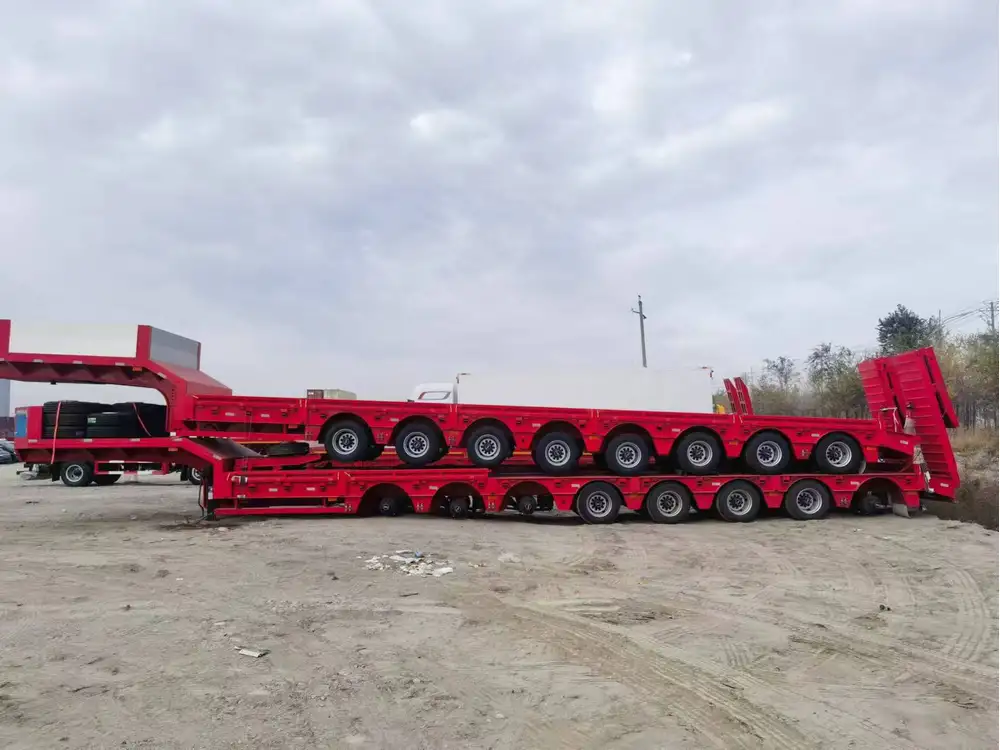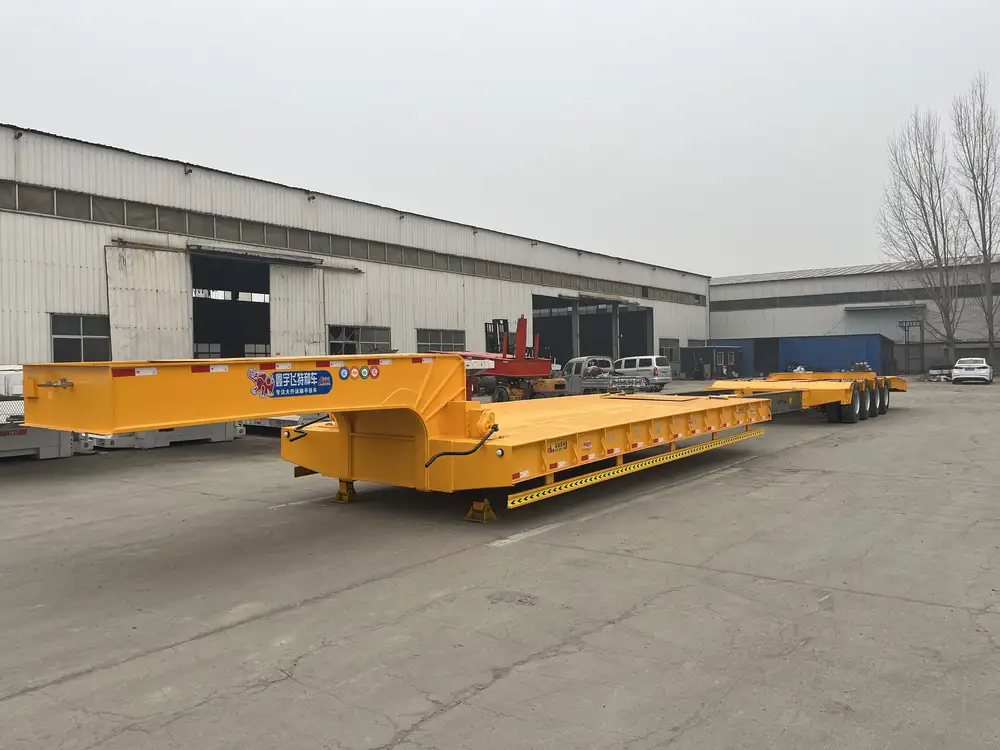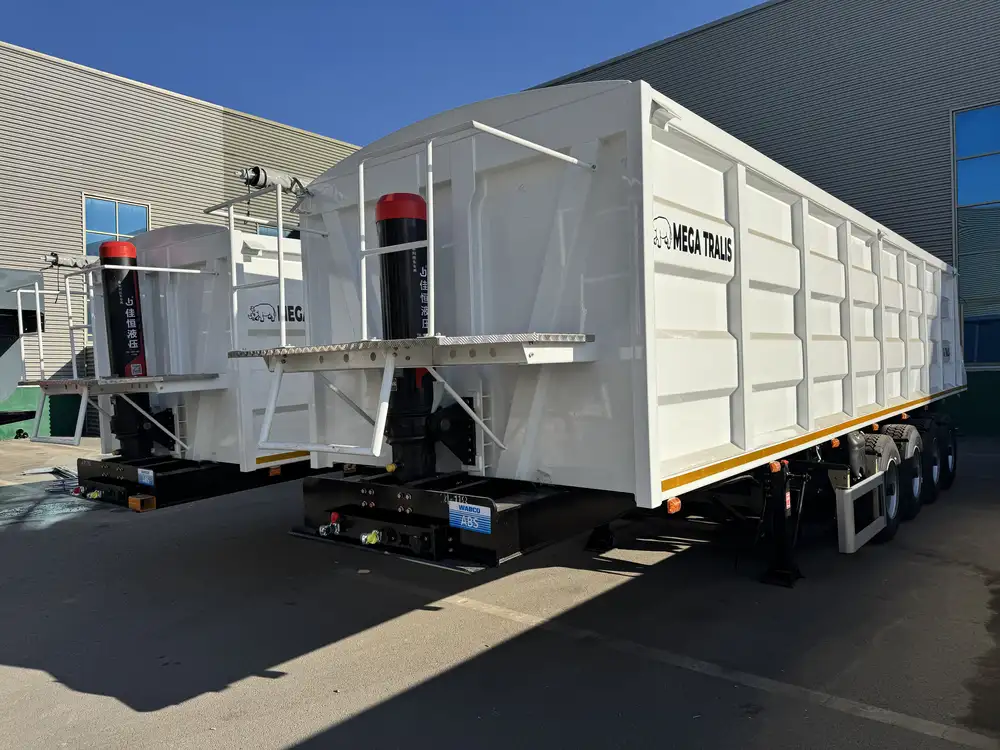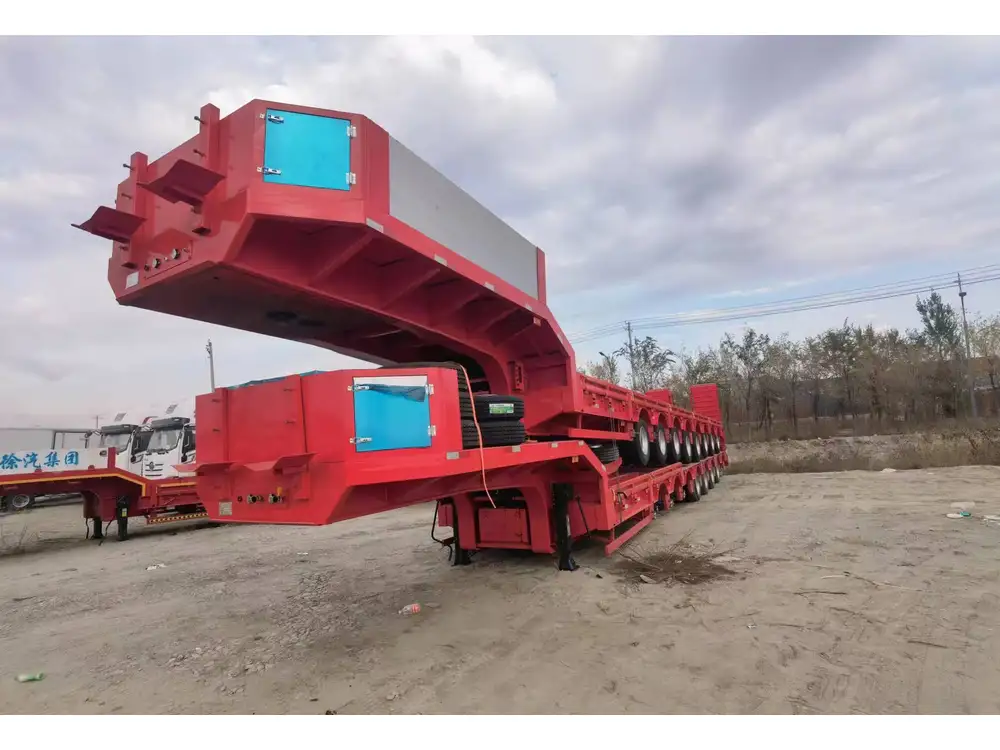In the bustling world of transportation and logistics, the semi-trailer reigns supreme as a pivotal component for efficient freight movement. This in-depth exploration aims to illuminate the intricate workings of semi-trailers, their classifications, design features, advantages, and the roles they play in modern logistics.
Understanding the Basics of a Semi-Trailer
Definition of a Semi-Trailer
A semi-trailer is a type of trailer that cannot stand alone; it requires a semi-truck to support and move it. Characteristically, the design features a front section that is supported by the truck’s chassis while the rear end is left open. This structure allows for a higher loading capacity and enhances maneuverability in various road conditions.

Components of a Semi-Trailer
To fully grasp what constitutes a semi-trailer, one must examine its primary components, which include:
Container Body: This is the main structure where goods are stored. It can come in various shapes and sizes depending on the cargo type.
Axles: These are pivotal in ensuring stability. Semi-trailers typically have two or more axles that support their weight.
Suspension System: This system is critical for absorbing shocks from the road, thereby protecting the cargo and enhancing ride quality.
Landing Gear: Located at the front, landing gear supports the trailer when uncoupled from the truck.
Coupling Mechanism: This includes the kingpin and fifth wheel that connects the semi-trailer to the tractor truck.
Identifying Features of Semi-Trailers
It’s important to note that semi-trailers come in various configurations, each adapted for specific transport needs. They can be open or enclosed, and may include features such as:
Tippers: Designed for transporting bulk materials, tippers feature a tilting mechanism for easy unloading.
Flatbeds: These provide a simple flat platform ideal for oversized or irregularly shaped cargo.
Reefers: Refrigerated semi-trailers that maintain specific temperatures for perishable goods.
Lowboys: Specialized trailers designed for transporting heavy machinery or equipment that requires a lower center of gravity.
Types of Semi-Trailers

1. Enclosed Semi-Trailers
These trailers are encapsulated, providing protection against the elements. Ideal for transporting delicate items, they come equipped with air-ride suspension systems to mitigate shock.
2. Flatbed Semi-Trailers
Flatbeds are incredibly versatile, allowing for quick loading and unloading. They come with stakes or chains to secure cargo but offer no shelter from weather.
3. Refrigerated Semi-Trailers (Reefers)
Essential for the food and pharmaceutical industries, reefers maintain temperature control. They often have advanced insulation and lightweight materials to optimize efficiency.

4. Specialty Semi-Trailers
These trailers cater to unique transport needs and can include tankers for liquids, car haulers, and lowboys for carrying heavy equipment.
Comparative Table of Semi-Trailer Types
| Type | Primary Use | Key Features |
|---|---|---|
| Enclosed Semi-Trailer | General cargo | Full-body enclosure, security |
| Flatbed Semi-Trailer | Oversized cargo | No sides or roof, easy access |
| Refrigerated Trailer | Temperature-sensitive goods | Insulated walls, refrigeration unit |
| Lowboy Semi-Trailer | Heavy equipment transport | Low profile, removable gooseneck |
Advantages of Using Semi-Trailers

Enhanced Load Capacity
Semi-trailers offer a significant advantage in load capacity compared to traditional trailers. Their design allows for more substantial cargo without compromising stability or safety.
Flexible Transportation Options
The ability to use different configurations makes semi-trailers adaptable. Carriers can optimize operations by selecting the appropriate configuration for their specific needs.
Reduced Risk of Damage
The inclusion of advanced suspension systems significantly reduces cargo damage during transit. These systems ensure that semi-trailers adapt to road irregularities, protecting sensitive goods.

Cost-Effectiveness
They enable freight companies to maximize loads, which translates to lower transportation costs per unit. The efficiency of semi-trailers allows for a better return on investment.
Versatility
The variety of types and uses allows businesses across many sectors to utilize semi-trailers, making them an unparalleled asset in logistics and transportation.
Key Considerations When Selecting a Semi-Trailer

1. Purpose and Cargo Type
Understanding what type of cargo will be transported is crucial. For instance, are you hauling perishables that require a reefer, or are you transporting heavy construction equipment that necessitates a lowboy?
2. Weight Limits and Regulations
Familiarize yourself with federal and state regulations regarding weight limits for various types of semi-trailers. Exceeding these limits can result in costly fines and safety hazards.
3. Maintenance and Durability
Select semi-trailers constructed from durable materials that can withstand the demands of your operations. Regular maintenance is key to longevity, so consider ease of access for repairs.

4. Cost and Budgeting
Initial purchase cost is just one aspect. Operational costs, including maintenance, insurance, and fuel consumption, should also factor into your budgeting process.
Troubleshooting Common Semi-Trailer Issues
1. Unstable Loads
When loads shift during transit, it can jeopardize safety. Here are solutions to stabilize loads:
Proper Weight Distribution: Ensure that cargo is evenly distributed across the trailer.
Use of Straps and Tarps: Secure the load with appropriate equipment.

2. Brake Failures
Brake issues are among the most critical safety concerns. Regularly inspect:
Brake Pads and Rotors: Replace as needed based on wear and tear.
Air Lines and Connections: Check for leaks that could degrade braking efficiency.
3. Suspension Problems
If a semi-trailer experiences frequent dips or instability, it may indicate suspension issues. Solutions include:
Routine Inspections: Conduct checks on the air bags and suspension components.
Professional Assistance: Engage a qualified technician for repairs and replacements.
4. Tire Wear and Blowouts
Tire health is crucial for safe transport. Regular maintenance should encompass:
Tire Rotations: Regular rotation can maximize performance and lifespan.
Inflation Checks: Maintain proper air pressure as per manufacturer guidelines.

Future Trends in Semi-Trailer Design and Technology
As we look ahead, significant innovations are poised to reshape the semi-trailer landscape. Here are a few anticipated trends:
1. Sustainability Evolving
The logistics landscape is transitioning towards greener solutions. Lightweight materials, electric trailers, and advanced aerodynamics will play pivotal roles in minimizing emissions.
2. Smart Technology Integration
Modern semi-trailers are now incorporating advanced technology—think GPS tracking, automated load monitoring, and telematics—to enhance operational efficiency.

3. Customization
Manufacturers are increasingly offering bespoke designs tailored to specific industry needs, resulting in better functionality and efficiency.
4. Autonomous Capabilities
The future of semi-trailers may hold autonomous driving technology, which aims to enhance safety and reduce reliance on manpower.
Conclusion: The Vital Role of Semi-Trailers in Logistics
In summation, understanding what a semi-trailer is and how it functions is vital for any stakeholder in the logistics and transportation industry. From their definition and types to the advantages they confer and future trends, semi-trailers represent a cornerstone of freight transport.
Choosing the right semi-trailer takes careful consideration of various factors, including cargo type, weight limits, and operational costs. By staying informed about troubleshooting common issues and embracing future developments, businesses can effectively leverage these powerful transport tools for optimal operational efficiency.
As always, remain proactive and informed, equipping yourself with the knowledge to navigate the intricate world of semi-trailer logistics effectively.



